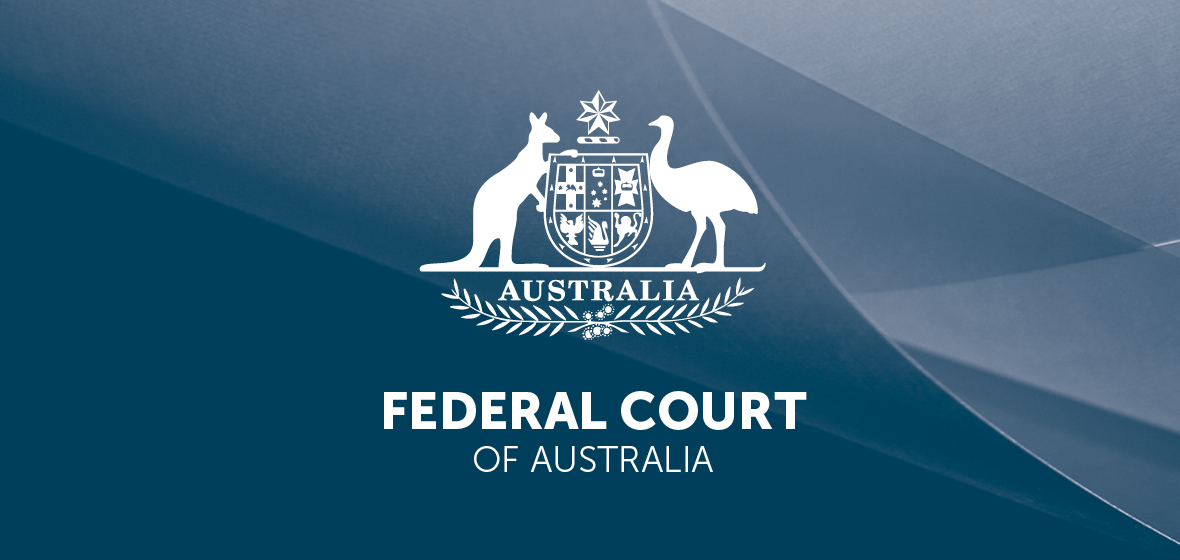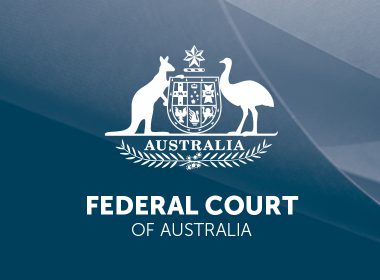Key decisions
- Australian Competition and Consumer Commission v Google LLC (No 4) [2022] FCA 942
- Cruickshank v Australian Securities and Investments Commission [2022] FCAFC 128
CONSUMER LAW
First respondent contravened ss 18, 29 and 34 Australian Consumer Law – parties agreed on relief, declarations and pecuniary penalties – arithmetic maximum penalty would be so disproportionately large as to make precise calculation unnecessary and unhelpful – whether appropriate to adopt ‘course of conduct’ principle or totality principle in assessing multiple contraventions
Australian Competition and Consumer Commission v Google LLC (No 4) [2022] FCA 942 (Thawley J)
On 12 August 2022, the Federal Court delivered judgment on penalty in ACCC v Google LCC (No 4) (‘PJ’). The Court ordered the first respondent, Google LLC (a company incorporated in the USA), to pay $60 million in penalties for making misleading representations to consumers about the collection and use of their personal location data on Android phones between January 2017 and December 2018. The second respondent, Google Australia Pty Ltd, was a subsidiary of Google LLC which conducted certain aspects of Google LLC’s business in Australia, including the distribution of its Pixel phones.
The ACCC and the respondents (together, ‘Google’) jointly submitted – and the Court accepted (PJ at [62]) – that a penalty of $60 million against Google LLC was appropriate and that no separate penalty against Google Australia Pty Ltd was necessary, in circumstances where the Australian company was not responsible for the preparation of the screens which the Court found were misleading.
The Court also made orders requiring Google to ensure its policies include a commitment to compliance and to train certain staff about Australian Consumer Law (‘ACL’), as well as to pay a contribution towards the ACCC’s costs.
In the liability judgment, delivered on 16 April 2021 (ACCC v Google LLC (No 2) [2021] FCA 367 (‘LJ’)), the Court found that Google had breached the Australian Consumer Law by representing to approximately 1.3 million Android users that the setting titled ‘Location History’ was the only Google account setting that affected whether Google collected, kept and used personally identifiable data about their location. In fact, another Google account setting titled ‘Web & App Activity’ also enabled Google to collect, store and use personally identifiable location data when it was turned on, and that setting was turned on by default.
According to the ACCC’s media release following the delivery of the penalty judgment, this is the first public enforcement outcome arising out of the ACCC’s Digital Platform Inquiry. ‘This significant penalty imposed by the Court today sends a strong message to digital platforms and other businesses, large and small, that they must not mislead consumers about how their data is being collected and used’, ACCC Chair Gina Cass-Gottlieb said in the media release. ‘Personal location data is sensitive and important to some consumers, and some of the users who saw the representations may have made different choices about the collection, storage and use of their location data if the misleading representations had not been made by Google’, Ms Cass-Gottlieb said.
This significant penalty imposed by the Court today sends a strong message to digital platforms and other businesses, large and small, that they must not mislead consumers about how their data is being collected and used.
Penalty judgment
The parties jointly submitted that declarations should be made reflecting the contraventions found by the Court during the liability stage of the trial and orders should be made that Google pay pecuniary penalties in the total amount of $60 million, enter into certain agreed compliance measures and pay 50 per cent of the ACCC’s costs of the liability phase of the proceedings.
Justice Thawley addressed the relevant provisions and principles beginning with s 224(1) of the ACL (at [6] ff). Relevantly, section 224(1) provides that if the Court is satisfied that a person has contravened a relevant provision, the Court may order the person to pay a pecuniary penalty in respect of each act or omission by the person to whom the section applies as the Court determines to be appropriate. Section 224(2) provides that, in determining the appropriate pecuniary penalty, the Court ‘must’ have regard to ‘all relevant matters’ including:
- the nature and extent of the act or omission and of any loss or damage suffered as a result of the act or omission; and
- the circumstances in which the act or omission took place; and
- whether the person has previously been found by a court in proceedings under Chapter 4 or this Part to have engaged in any similar conduct (at [6]).
The task of the Court, where parties have agreed on an appropriate penalty, includes:
- first, the Court forming a view as to whether it is sufficiently persuaded of the accuracy of the parties’ agreement as to the relevant facts and consequences; and
- secondly, the Court determining whether the penalty the parties propose is an appropriate remedy (or falls within an appropriate range) in all the circumstances (PJ at [19]). The question is not what penalty the Court would have imposed in the absence of an agreement (PJ at [66]).
Multiple contraventions
The best estimate of the number of affected Google Accounts was 1.3 million. His Honour discussed two principles which may usefully be deployed as analytical tools in the enforcement of civil penalty regimes – namely, the ‘course of conduct’ principle and the totality principle (PJ at [30] ff).
The course of conduct principle recognises that, in fixing the fair and reasonable penalty appropriate to achieving the objective of deterrence, it is appropriate in some cases to treat multiple contraventions as being sufficiently closely related as to be appropriately regarded, for the purposes of imposing penalties, as forming part of a ‘course of conduct’ (PJ at [33]).
The totality principle requires that the total penalty imposed on a person found to have committed multiple contraventions must bear a proper relationship to the overall conduct involved in all of the contraventions after having regard to all of the relevant circumstances and the object for which the penalty is imposed, namely deterrence (PJ at [36]).
Consideration
Some interesting observations from his Honour’s consideration of the relevant matters going to penalty included:
- The ACCC did not allege that Google deliberately contravened the ACL (PJ at [50]).
- The parties agreed that there was no previous relevant conduct (PJ at [51]).
- Google’s revenue for the calendar years 2017 to 2019 ranged from approximately USD 110 billion to USD 160 billion per year. The size of Google’s revenue supported a conclusion that a significant penalty was required to achieve the object of general and specific deterrence, and it also indicated that the size of the penalty proposed was not oppressive (PJ at [52]-[53]).
- The senior managers of Google were not involved in the contravening conduct (PJ at [54]).
- Google contested liability in the hearing, as it was entitled to do, conducted itself appropriately during the course of the liability phase of the proceedings and cooperated on the penalties issue, saving the Court the need for a contested hearing on penalty (PJ at [57]-[59]).
- Whilst Google had not adduced testimonial evidence of contrition, it agreed to orders requiring improved compliance processes, thus demonstrating a genuine willingness to cooperate with authorities and ensure compliance with all applicable consumer laws (PJ at [60]).
Conclusion
In concluding, Thawley J accepted the accuracy of the agreed facts and, generally, the parties’ joint submissions as to the effects of the contraventions (PJ at [67]). The Court was satisfied that the penalty agreed was an appropriate penalty to achieve the necessary specific and general deterrent objective of the imposition of the penalty, when considered together with the declarations and other orders, including the various compliance measures which the parties had agreed (PJ at [67]).
The size of Google’s revenue supported a conclusion that a significant penalty was required to achieve the object of general and specific deterrence, and it also indicated that the size of the penalty proposed was not oppressive.
CORPORATIONS
Continuous disclosure obligations pursuant to Corporations Act 2001 (Cth), s 674 – whether appellant contravened s 180 by failing to exercise care and diligence in causing or permitting the company to contravene s 674 – whether disqualification order justified
Cruickshank v Australian Securities and Investments Commission [2022] FCAFC 128 (Allsop CJ, Jackson, Anderson JJ)
In September 2015, Mr Cruickshank was a director and the chief executive officer of a company listed on the Australian Stock Exchange (‘ASX’) known as Antares Energy Limited (‘Antares’). Antares was an oil and gas exploration and production company. Its principal assets were oil, gas and other minerals contained in various properties in the Permian Basin of Texas, USA.
Over the course of a week in September 2015, Antares entered into two agreements to sell two of its assets. Antares disclosed to the ASX its entry into the agreements but not the details of the counterparty or its verification of the counterparty’s capacity to complete. Mr Cruickshank signed the two sale agreements on behalf of Antares. Following those announcements on the ASX, the volume of trading in Antares shares increased and the share price jumped, initially, by about 250 per cent.
The trial
The Australian Securities and Investments Commission (‘ASIC’) alleged the following ‘information’ should have been disclosed to the market:
- the name of the counterparty to the two sale agreements, Wade Energy Corporation (‘Wade Energy’), a limited liability company incorporated in Texas, USA;
- that Antares had not independently verified or determined Wade Energy’s capacity to complete the purchases; and
- that the day before the first announcement on the ASX regarding the two sale agreements, the CEO of Wade Energy had informed Mr Cruickshank that he had not yet received all financing approvals necessary to complete the purchase of one of the two assets.
At first instance, ASIC claimed that:
- the company contravened its continuous disclosure obligations, pursuant to s 674(2) of the Corporations Act 2001 (Cth) (‘Act’); and
- Mr Cruickshank:
- was directly or indirectly knowingly concerned in the company’s contraventions and thereby contravened s 674(2A) of the Act; and
- failed to discharge his duties as a director/officer of the company with the degree of care and diligence required by causing or permitting the company to contravene s 674(2) and thereby Mr Cruickshank contravened s 180 of the Act.
The primary judge found the company had contravened its continuous disclosure obligations under s 674 of the Act and that Mr Cruickshank had contravened his duty of care and diligence as a director/officer. However, the primary judge rejected ASIC’s claim that Mr Cruickshank was, by his acts or omissions, directly or indirectly, knowingly concerned in the company’s contravention of its continuous disclosure obligations under s 674(2) of the Act.
In respect of those contraventions by Mr Cruickshank, the Court made declarations regarding his breaches of duty, disqualified him from managing a corporation for four years and ordered him to pay a $40,000 pecuniary penalty.
Mr Cruickshank appealed the primary judge’s findings on both liability and penalty.
The appeal
The appeal grounds included challenges to the primary judge’s determination that (i) the purchaser’s identity and (ii) Antares’ failure to independently verify Wade Energy’s capacity to complete the transaction comprised ‘material information’. Mr Cruikshank also appealed orders with respect to his contraventions and disqualification. In the course of upholding the primary judge’s orders, the Full Court addressed several important aspects of ss 647 and 180 claims.
Section 674(2) of the Act
The Full Court did not disturb the primary judge’s articulation of the elements that must be proven to establish a contravention of s 674(2), namely:
- there was ‘information’ about specified events or matters within the meaning of Listing Rule 3.1 and s 674(2)(b);
- the company had that ‘information’ (s 674(2)(b)) and was aware of it (Listing Rule 3.1);
- the ‘information’ was not generally available (s 674(2)(c)(i)); and
- a reasonable person would have expected that ‘information’ to have had a material effect on the price or value of the shares in the company, if it had been generally available (s 674(2)(c)(ii); Listing Rule 3.1).
Relevant to (d), above, is the deeming provision in s 677 of the Act, that is, whether persons who commonly invest in securities would be influenced in their investment decisions by such ‘information’.
The correct approach was to identify the degree of care and diligence that would have been exercised by a reasonable person who was a director of a corporation in the company’s circumstances, occupying the same office and having the same responsibilities…
Identifying the ‘information’
Mr Cruickshank contended that ASIC had failed to identify with precision the ‘information’ required to be disclosed pursuant to s 647(2) of the Act. In rejecting that complaint, the Full Court endorsed the observations made by Justice Lee in Australian Securities and Investments Commission v GetSwift Ltd [2021] FCA 1384 (‘Getswift’) to the effect that even though allegations of contravention of civil penalty provisions such as s 647(2) must be drafted with precision, and identifying the relevant ‘information’ is fundamental, the purpose of pleadings is to afford procedural fairness to the opposing party so it is aware of the case that it is required to meet (Getswift at [84]-[85], [89]). The Full Court accepted that the alleged ‘information’ may need to be considered in a broader context for the purpose of determining whether it satisfies the statutory test for materiality. For that reason, it will often be necessary to consider whether there is additional information beyond what is alleged not to have been disclosed and what impact that additional information would have had. The Full Court observed that ‘a common-sense judgment must therefore be made about how the “information” is identified and described in the pleading’ (at [122]).
ASIC’s use of a ‘Concise Statement’
ASIC commenced (and pursued) the proceedings by way of an Originating Application and Concise Statement, rather than ‘full’ pleadings. Such an approach is contemplated in the Federal Court’s ‘Commercial and Corporations Practice Note (C&C-1)’ (see [5.4]-[5.9]). The Full Court did not suggest that another approach (i.e. ‘full’ pleadings) would have been more appropriate. However, it is clear that whether the case proceeds by way of Concise Statement, pleadings or affidavits, procedural fairness requires the applicant to give notice to the opposing party of the ‘nature of the case they have to meet’ (Getswift at [85]).
Proof of ‘materiality’ of the ‘information’
At trial, ASIC sought to prove the materiality of the ‘information’ which it alleged ought to have been disclosed to the market via expert opinion evidence. The expert was a corporate adviser and equity market consultant with nine years experience as an analyst specialising in ASX listed mining and exploration companies and 15 years experience involving interactions with institutions and retail investors. Mr Cruickshank did not adduce any expert evidence on materiality, but objected to the admission of ASIC’s expert evidence on the basis that the expert did not have the necessary ‘specialised knowledge’ required to provide expert opinion evidence on this claim.
The ‘specialised knowledge’ comprised of ‘knowledge of how investors in listed securities react to information and specifically to new information in deciding whether to acquire or dispose of listed securities’ (at [103]). The Full Court held that it was open to the primary judge:
- to accept that ASIC’s expert possessed the relevant specialised knowledge; and
- to accept the substance of ASIC’s expert opinion evidence as there was a logical and reasoned basis for the opinions expressed. The Full Court saw no basis to disagree with the trial judge’s conclusion that the information was relevantly ‘material’.
Expert evidence and s 180(1) of the Act
The Full Court rejected an argument that ASIC was required to lead expert witness evidence regarding what a reasonable professional director/officer would have done in order to succeed on its claim that Mr Cruickshank contravened his statutory duties as a director. The Full Court stated that whilst there were cases in which a breach of s 180(1) had been proven by reference to expert evidence from professional directors or company officers, courts regularly identify those breaches without such evidence (at [138]).
The Full Court observed that it was not necessary to find that a person in Mr Cruickshank’s position would have known all the matters analysed by ASIC’s ‘materiality’ expert and whether they would have arrived at the same conclusions as he did. The correct approach was to identify the degree of care and diligence that would have been exercised by a reasonable person who was a director of a corporation in the company’s circumstances, occupying the same office and having the same responsibilities as Mr Cruickshank.
Disqualification orders
Mr Cruickshank argued that the primary judged erred in considering a disqualification order pursuant to s 206C of the Act before considering a pecuniary penalty. The Full Court rejected that argument, observing the long-standing practice of considering disqualification prior to pecuniary penalties.
The appeal was dismissed in its entirety and Mr Cruickshank was ordered to pay ASIC’s costs.



Theresa Power, Denes Blazer and Joanne Shepard are barristers at 12 Wentworth Selborne Chambers.


